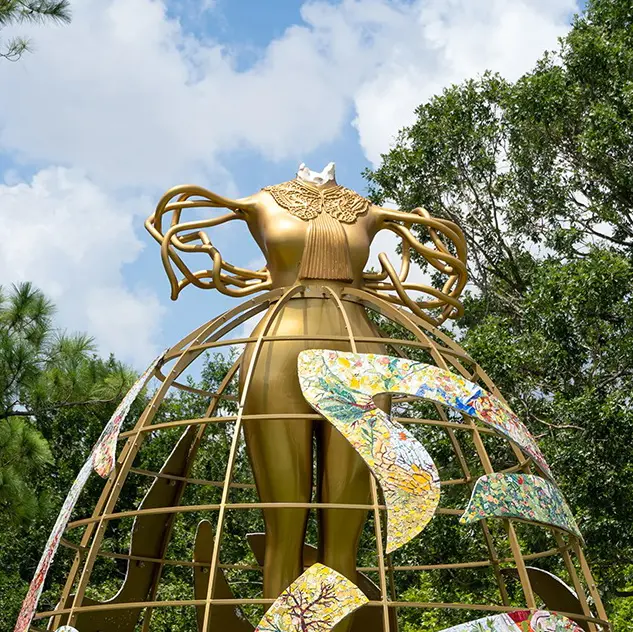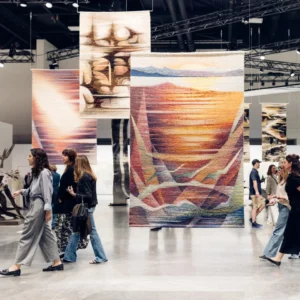A sculpture by Shahzia Sikander at the University of Houston was beheaded. In a Washington Post op-ed, Sikander announced she will not repair it, believing the act should stand as a testament to the hatred and divisiveness in our communities, especially regarding women’s rights.
Co-commissioned by the University of Houston and the Madison Square Park Conservancy and initially displayed in Madison Square Park and the nearby courthouse of the Appellate Division, Sikander’s project, Havah…to breathe, air, life was launched in 2023.
The exhibition featured the bronze sculpture “Witness” (2023), a video animation, and an augmented reality (AR) experience. Another sculpture, “NOW” (2023), was on view at the courthouse through January 2024. Sikander’s works explore themes of women and justice, uniting female figures in her sculptures and natural motifs to challenge traditional symbols of power and justice.
“Witness” is an 18-foot golden sculpture of a levitating woman with a skirt decorated with mosaic pieces. The significance of the sculpture is derived from its design elements, such as the lace jabot that references the feminization of judicial robes and the braided hair that honors the work of generations of women who have fought for their right to their own bodies.
In February 2024, some anti-abortion groups had raised concerns about the sculpture, particularly about the braided horns, calling it a “satanic” memorial of the late Supreme Court justice Ruth Bader Ginsburg and held protests for it to be removed from the campus of University of Houston. Despite these accusations, Sikander emphasized that her work celebrates women’s resilience and power.
On July 8, “Witness” was beheaded. Sikander encouraged the university to focus on art education, emphasizing how it can be interpreted from diverse perspectives and how it serves as a tool to cultivate imagination and build empathy. She believes leaving the sculpture beheaded will help her use her art as a vehicle of defiance against the global regression of women’s rights and as a path toward rectification.
The acclaimed Pakistani artist creates her works by drawing inspiration from the traditional Indo-Persian narratives and figures. She was trained by Bashir Ahmad and graduated from the National College of Art. She became the first woman to teach in the Miniature Painting Department.





